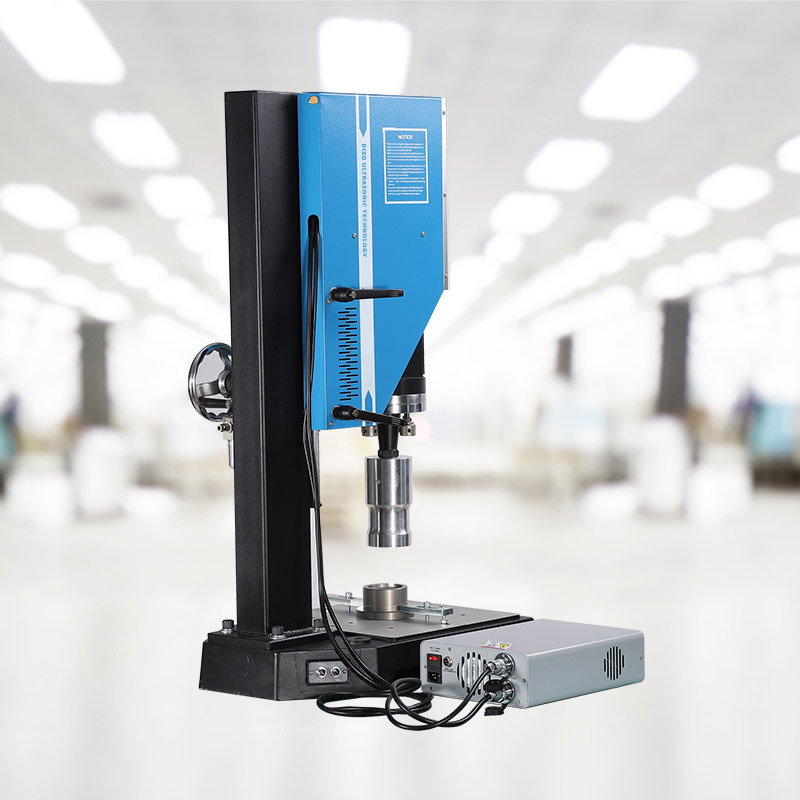How Strong Is Ultrasonic Welding? Full Strength Breakdown
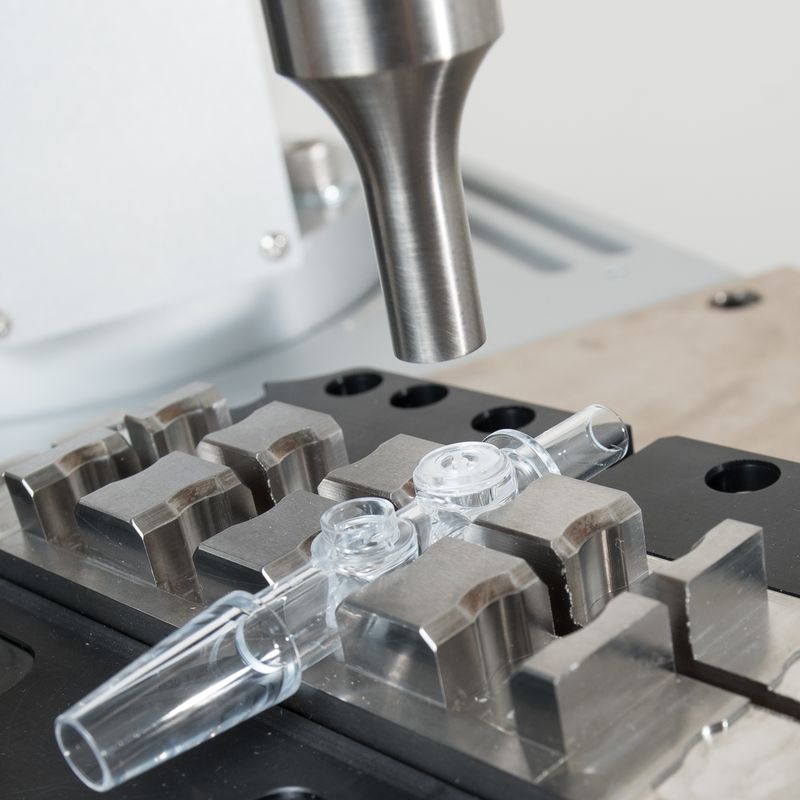
Ultrasonic welding is one of the most powerful and precise methods for joining plastic materials, as well as metals. The strength of the weld bonds created by ultrasonic welding is a crucial factor that determines its effectiveness in various applications.
In this article, we will explore how strong is a weld created by ultrasonic welding, what is ultrasonic welding, how it compares to other welding methods, and how to achieve optimal results for various applications.

Table of Contents
How Strong Is Ultrasonic Welding?
Understanding Ultrasonic Welding Technology
Factors Influencing Ultrasonic Welding Strength
Comparative Strength Analysis
Industrial Applications and Their Strength Requirements
Statistical Insights and Data on Weld Strength
Common Challenges and Solutions in Ultrasonic Welding
FAQs
Conclusion
How Strong Is Ultrasonic Welding?
When comparing "how strong is a weld" made by ultrasonic welding with traditional welding techniques, ultrasonic welds can reach bond strengths that are comparable to or even exceed the strength of the base materials being welded.
The strength of a weld created with an ultrasonic welding machine is determined by several factors, including the materials being welded, the amplitude, pressure, and time settings on the machine, and the overall design of the welded parts.
Understanding Ultrasonic Welding Technology
To understand weld strength, it's important to first explore the principles of ultrasonic welding technology and how its components contribute to the process.
Ultrasonic welding is a solid-state welding process that uses high-frequency ultrasonic vibrations to join materials. The process typically involves the use of an ultrasonic welding machine, which consists of several components, including a transducer, a sonotrode (horn), and a fixture.
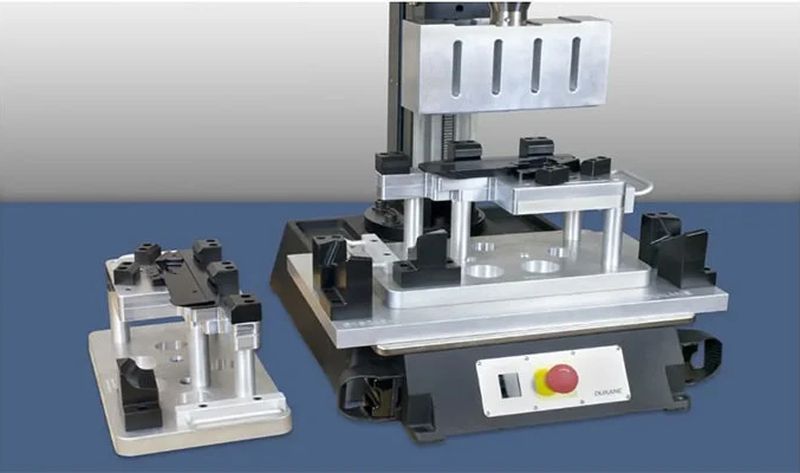
The ultrasonic welding machine generates vibrations in the ultrasonic range (typically 20 to 70 kHz), which are applied to the workpieces under controlled pressure.
The primary advantage of ultrasonic welding is that it does not require external heat sources like those used in traditional welding. Instead, ultrasonic waves generate heat through friction at the interface of the materials being joined. This results in a very strong molecular bond without the need for melting the material.
The strength of the weld produced depends on how strong the ultrasonic vibrations are and the amount of pressure applied to the workpieces. Therefore, understanding how to set the ultrasonic welding machine correctly is crucial to achieving optimal weld strength.
Factors Influencing Ultrasonic Welding Strength
When manufacturers ask, "How strong are welding joints made with ultrasonic welding?" they should consider the following variables that influence weld integrity:
1. Amplitude
Amplitude refers to the magnitude of the ultrasonic vibrations. A higher amplitude leads to greater energy being transferred into the materials, which can result in stronger bonds.
However, if the amplitude is too high, it may cause material degradation or lead to uneven welding, which can compromise the strength of the weld. Proper control of amplitude is essential for achieving optimal bond strength.

2. Pressure
The pressure applied to the parts during ultrasonic welding is critical for creating a strong, solid bond. If the pressure is too low, the materials may not fuse properly, leading to a weak joint.
On the other hand, excessive pressure can distort the materials or cause defects. Proper pressure ensures that the materials are in close contact, facilitating the formation of a high-strength bond.
3. Time
The duration of the ultrasonic vibration is another factor that affects weld strength. The ultrasonic welding machine must be set to the correct time to allow the materials to fuse properly.
Too short a time can result in incomplete bonding, while too long a time may cause material degradation. Therefore, the welding time must be carefully controlled to achieve the strongest possible weld.
Comparative Strength Analysis
How strong is a weld created by ultrasonic welding compared to other traditional methods? Below, let's compare ultrasonic welding with other common welding techniques to assess its strength and advantages.
1. Ultrasonic Welding vs. Laser Welding
Laser welding is highly regarded for its precision, especially when working with thin materials. However, ultrasonic welding has distinct advantages, particularly when it comes to joining plastics, composites, and delicate materials.
In terms of bond strength, ultrasonic welding is often stronger, especially in plastic-to-plastic joints, as it forms a seamless connection without the thermal degradation risks associated with laser welding.
2. Ultrasonic Welding vs. Resistance Welding
Resistance welding involves applying heat generated by electrical resistance to join metals. While this method is effective for certain metals, ultrasonic welding is more versatile, joining a broader range of materials, including plastics, metals, and dissimilar materials.
For both plastic and metal welding, ultrasonic welding can create bonds that are as strong as or even stronger than the base materials, depending on the process parameters.
3. Ultrasonic Welding vs. Friction Stir Welding (FSW)
Friction Stir Welding is a solid-state welding process used primarily for joining metals, where the material is heated to a plastic state using friction. This method is often used in aerospace and automotive industries.
Ultrasonic welding, on the other hand, offers superior speed and is more cost-effective in mass production, especially when dealing with small plastic or thin metal parts.
The strength of ultrasonic welds in certain plastics can exceed that of friction stir welds, particularly for materials that are sensitive to thermal distortion.
4. Ultrasonic Welding vs. Hot Plate Welding
Hot Plate Welding uses heat and pressure to fuse plastic parts, which can result in strong joints, but it's a slower process compared to ultrasonic welding.
Ultrasonic welding is known for its speed, producing strong bonds in just milliseconds, which gives it a competitive edge when time is a critical factor. The strength of the ultrasonic welds in plastics often compares favorably with those achieved through hot plate welding, especially when dealing with intricate parts.
5. Ultrasonic Welding vs. Vibration Welding
Vibration welding also uses vibration energy to join parts, but it typically involves lower frequencies than ultrasonic welding. Ultrasonic welding generally results in higher bond strength because the higher-frequency vibrations lead to more efficient molecular interlock and less material degradation.
While vibrational welding is suitable for some thermoplastics, ultrasonic welding is the preferred choice when a stronger bond is required in high-precision applications.
Industrial Applications and Their Strength Requirements
Ultrasonic welding has diverse applications across various industries. Each industry has specific strength requirements for its welded components. Below are the industrial applications and their strength requirements of ultrasonic welding.
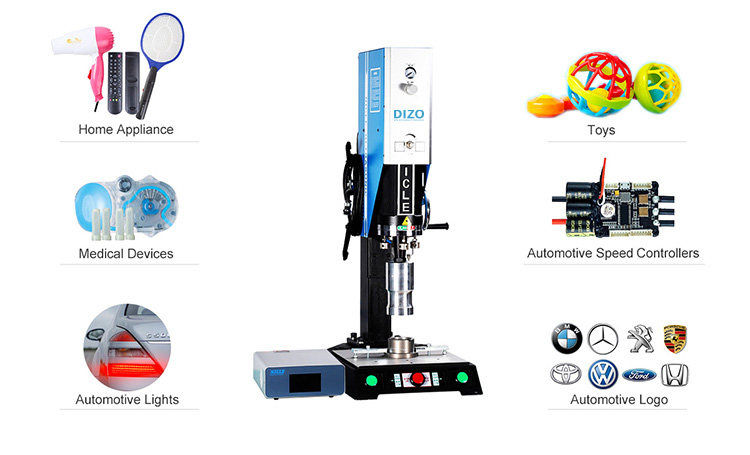
1. Automotive Industry
In the automotive sector, ultrasonic welding is used for joining lightweight materials, wiring harnesses, and sensors.
The strength requirements for these components must ensure they can withstand vibrations, temperatures, and mechanical stresses without failing. Ultrasonic welding provides a reliable bond without the need for additional fasteners or adhesives, creating a strong, efficient connection.
Strength Requirements:
- Strength must be sufficient to endure long-term wear and tear, including resistance to thermal cycling and mechanical stress.
- Ultrasonic welds in automotive applications often meet these stringent requirements, ensuring reliability under dynamic loading conditions.
2. Medical Devices
In the medical industry, ultrasonic welding is used for bonding plastics in medical devices such as syringes, IV tubing, and blood filters.
The strength of the welds in these devices is critical because they need to meet strict regulatory standards and ensure patient safety. Ultrasonic welding's precision helps to create strong, clean, and leak-free joints in medical devices.
Strength Requirements:
- The strength must be high enough to avoid the risk of leaks or fractures during use, particularly in life-critical applications.
- Since ultrasonic welding does not generate excessive heat, it maintains the integrity of temperature-sensitive materials used in medical devices.
3. Electronics and Consumer Goods
The electronics industry heavily relies on ultrasonic welding for creating strong bonds between components, such as circuit boards and wires. The strength requirements in electronics manufacturing are often focused on electrical conductivity and minimal material degradation. Ultrasonic welding is ideal for producing strong joints without compromising the delicate components.
Strength Requirements:
- Strong electrical contact and minimal risk of heat-related damage to sensitive components are key considerations in electronics manufacturing.
- Ultrasonic welding ensures a secure bond that preserves both the mechanical integrity and electrical performance of the device.
Statistical Insights and Data on Weld Strength
Understanding the strength of ultrasonic welds is not only about qualitative descriptions but also about hard data.
Statistical insights and empirical data help manufacturers and engineers gauge the performance of ultrasonic welding in various applications. Below is a summary of relevant statistics and data:
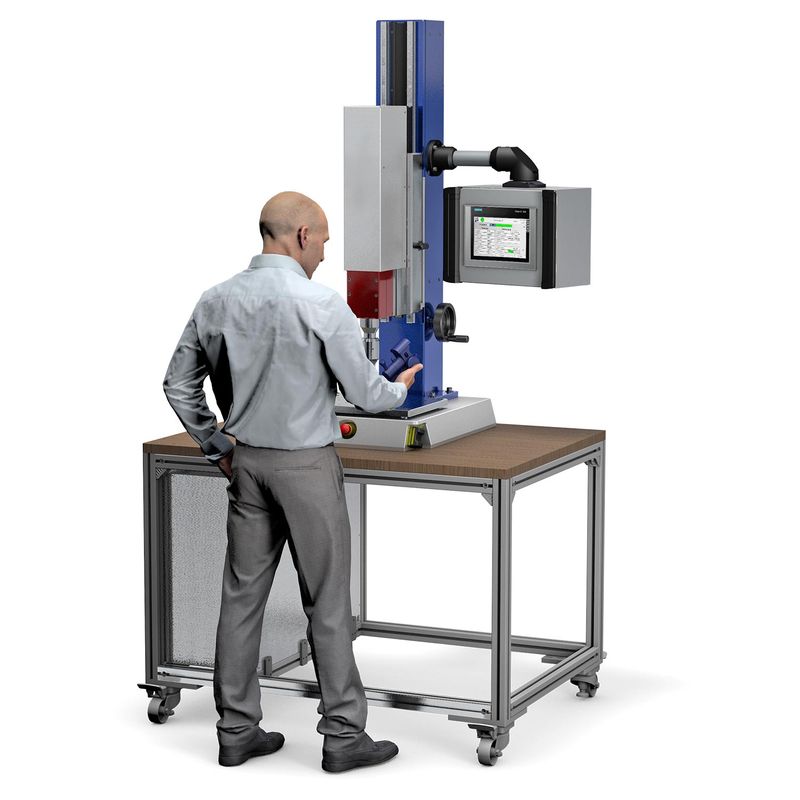
1. Tensile Strength of Ultrasonic Welds
Studies show that the tensile strength of ultrasonic welds in thermoplastics can range from 1000 psi to over 10,000 psi, depending on the material, amplitude, pressure, and time settings.
For instance, polyethylene and polypropylene can achieve tensile strengths of around 3000 to 5000 psi, while more advanced materials like polycarbonate may reach strengths exceeding 10,000 psi.
This range provides a good answer to the question "How strong is a weld?" The strength varies based on the material type and the precision with which the ultrasonic welding machine is operated.
2. Shear Strength
Shear strength refers to the ability of the weld to withstand forces that attempt to slide the parts apart. Ultrasonic welds in plastic components can achieve shear strengths between 1000 and 4000 psi.
Understanding how strong welding joints can be when using ultrasonic welding helps manufacturers select the best materials and welding parameters for optimal performance.
3. Fatigue Resistance
One of the standout features of ultrasonic welding is its high fatigue resistance. Ultrasonic welded joints can withstand repetitive stress over time, a crucial factor in industries like automotive and electronics.
For instance, ultrasonic welding in automotive components typically provides welds with a fatigue resistance of up to 100,000 cycles, making them ideal for parts subject to constant mechanical stress. This makes the application of ultrasonic welding particularly proper for durable, long-lasting joints in demanding environments.
4. Comparison of Welding Efficiency
Ultrasonic welding is also highly efficient in terms of time and energy consumption. On average, ultrasonic welding can produce a bond in less than 1 second, significantly faster than other methods like laser or hot plate welding, which can take several seconds to minutes. This not only increases productivity but also reduces operational costs.
The ultrasonic welding machine is key to this efficiency, allowing manufacturers to streamline production while maintaining high weld quality. Moreover, the energy consumed during the process is considerably lower compared to traditional welding techniques.
Common Challenges and Solutions in Ultrasonic Welding
While ultrasonic welding offers several advantages, there are also challenges that manufacturers must address to optimize the process. Below are some common challenges and practical solutions:
1. Inconsistent Weld Quality
Inconsistent weld quality can result from improper adjustment of the process parameters, such as amplitude, pressure, and time. These inconsistencies may lead to weak welds or even failures under stress.
Solution: To address this, the welding parameters for each specific material and application. Using ultrasonic weld testing techniques such as visual inspection, tensile testing, and ultrasonic testing can help ensure the weld quality is consistent.
Additionally, regular calibration of the ultrasonic welding machine and training for operators on proper setup can minimize the risk of inconsistent welds.
2. Material Compatibility
Ultrasonic welding is particularly effective for joining thermoplastics, but materials with dissimilar properties (e.g., different melting points or densities) may not bond effectively. Metals and some high-strength materials may also present challenges.
Solution: To improve weld strength in such cases, manufacturers should focus on selecting materials with similar characteristics or using coupling agents. For metals like aluminum or stainless steel, hybrid welding methods that combine ultrasonic welding with other techniques like vibration or heat may help improve the bond quality.
3. Surface Contamination
The presence of dirt, oils, or residues on the surfaces to be welded can interfere with the ultrasonic energy transfer and weaken the bond.
Solution: Ensuring surface cleanliness before the welding process is critical. Pre-weld cleaning methods such as wiping with solvents, ultrasonic cleaning, or plasma treatment can ensure that the surfaces to be welded are free of contaminants.
Clean surfaces contribute to the durability and strength of the welds, enhancing the overall performance of the ultrasonic welding machine.
4. Difficulty in Joining Thick Materials
Ultrasonic welding is more effective for joining thin parts (typically less than 5 mm). When attempting to weld thicker materials, the ultrasonic energy may not penetrate sufficiently to create a strong bond.
Solution: For thicker materials, pre-heating or using hybrid welding methods, such as a combination of ultrasonic welding with vibration or heat, may help.
Additionally, adjusting the welding parameters, such as increasing pressure or extending the time, can improve energy penetration. Some manufacturers also use specialized horns designed to optimize energy transfer for thicker materials.
5. Equipment Maintenance
Ultrasonic welding equipment requires regular maintenance to ensure consistent performance. Over time, components like the transducer or booster can degrade, leading to diminished weld quality or failure.
Solution: Scheduled maintenance, routine inspection, and replacement of worn-out parts are crucial. Ensuring that all components are correctly calibrated and operating at their optimal performance levels can prevent costly downtime and maintain the quality of welds over time.
FAQs
Here are some frequently asked questions about ultrasonic welding that provide valuable insights into its processes, advantages, and considerations:
What materials can be welded using ultrasonic welding?
Ultrasonic welding is primarily used for thermoplastics like polyethylene, polypropylene, polystyrene, and polycarbonate.
It is also effective for certain metals like aluminum, copper, and stainless steel in thin gauge forms. The application of ultrasonic welding extends to composite materials, and it can even join metal-to-plastic parts when the right parameters are applied.
How does ultrasonic welding compare to traditional welding methods?
Ultrasonic welding offers several advantages over traditional welding methods. Traditional methods like arc welding or resistance welding generally involve high temperatures and can lead to material distortion, especially in heat-sensitive materials.
Ultrasonic welding, on the other hand, uses high-frequency sound waves to generate localized heat, which results in minimal thermal degradation. It's faster, requires less energy, and can be applied to a wider variety of materials, particularly in plastic and small-scale applications.
What are the advantages of ultrasonic welding?
The key advantages of ultrasonic welding include:
- Speed: The process is rapid, with welds completed in milliseconds.
- Precision: Ultrasonic welding allows for precise, clean joints with minimal distortion or flash.
- No Need for Fasteners or Adhesives: Ultrasonic welding creates strong bonds without the need for additional materials like screws, rivets, or adhesives.
- Energy Efficiency: It uses less energy compared to traditional methods like laser or resistance welding.
- Environmentally Friendly: No toxic fumes or pollutants are generated, making it a cleaner option.
How can the quality of ultrasonic welds be tested?
Quality control for ultrasonic welds can be performed using several methods:
- Visual Inspection: Ensuring that the weld is clean and free of any defects.
- Tensile Testing: To measure the strength of the bond by pulling apart the welded parts.
- Ultrasonic Testing: This non-destructive test uses sound waves to inspect the integrity of the weld.
- Shear Testing: For measuring the resistance of the welded parts to shear forces.
- X-ray or CT Scanning: For detecting internal weld defects, particularly in complex assemblies.
What is the main problem in ultrasonic welding?
One of the main problems in ultrasonic welding is achieving consistent weld strength, especially when working with varying material thicknesses or complex geometries.
If the welding parameters (such as pressure, amplitude, or time) are not properly calibrated for the material and part design, it can result in weak or inconsistent bonds. Proper training and optimization of welding parameters are essential to avoid this issue.
Conclusion
To sum up, how strong is a weld in ultrasonic welding? Ultrasonic welding produces consistently strong and reliable welds that are well-suited for modern manufacturing needs, offering an efficient and high-quality solution for joining materials.
Whether for delicate plastic parts or lightweight metals, ultrasonic welding is proving itself as a critical technique for a wide array of industrial applications.


